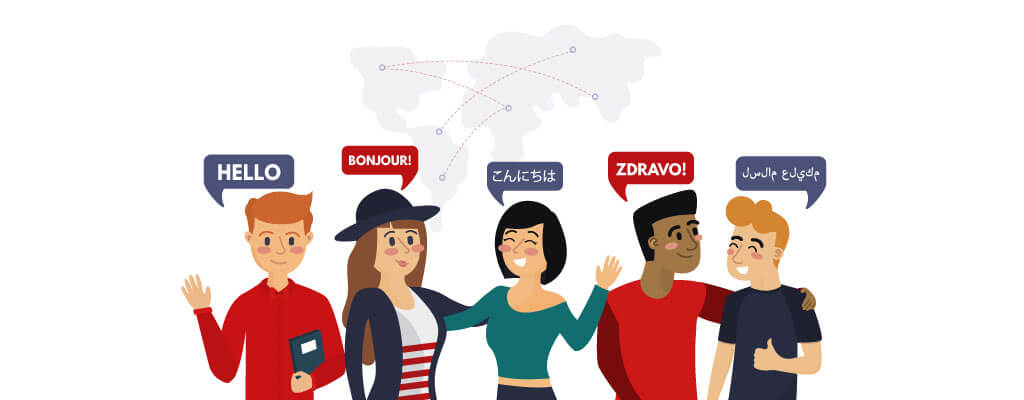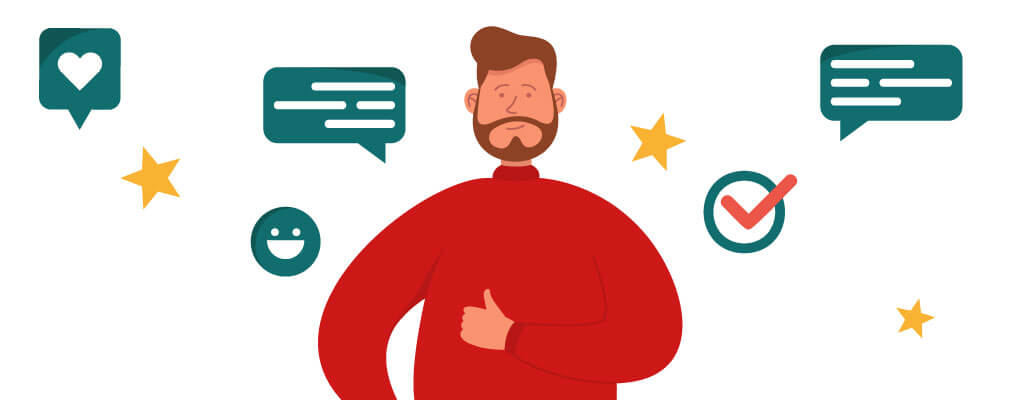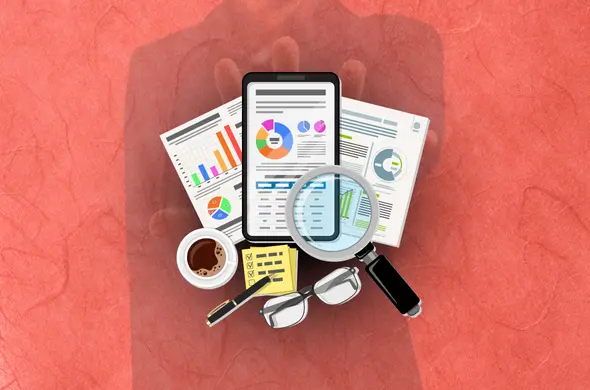Updated
June 23, 2023
Written by
Alyssa Maano
As your business grows, there will come a time when you will eventually need to expand. An expansion provides more opportunities for growth by boosting your brand awareness in a new market and therefore generating more profit. However, a business expansion can also break your business if not managed properly.
There’s a long list you need to consider during the process. You need to figure out the logistics, calculate the expenses, do some market research, and then create a business expansion plan from what you gathered. A major hurdle that you will have to tackle is the language barrier.
Language is a crucial part of communication in the business industry. It allows understanding and sharing of ideas between people. That makes miscommunications or lack of communication detrimental to your business’ growth as it can cost you a lot of opportunities with customers and business partners alike.
To put it in perspective, let’s look at some significant numbers:
Let’s state the obvious–not everyone speaks your language, nor can you force them to. You are the one who has to adjust. But that’s the mark of good customer service, isn’t it? Providing customer convenience is, after all, a staple in the customer service industry.
For the following reasons, having multilingual customer service should be a part of your business expansion plans. If you want to know more, then sit back and read on.
English may be the most spoken language around the world, but it doesn’t mean that every one of those speakers is as good as a native speaker. Customers who are not confident in their skill in a language may forgo asking for customer support and try somewhere else.
Customer service is where a lot of interaction with customers happens. You can lose a lot of potential sales because of the mentioned circumstance.
Multilingual customer support breaks down a lot of these barriers that might cause hesitancy or outright unwillingness. The representatives then will be able to attend to a customer’s needs, leading to customer satisfaction.

The benefits of providing good customer service create a positive domino effect.
According to BrightLocal, 76% of consumers read online reviews when browsing for local businesses. If the customers are satisfied, they will likely recommend your business to their network of connections. When these people are also satisfied, they will do the same. Thus, your name continues to travel to several social circles.
When your brand is known for delivering top-notch customer satisfaction, your brand’s reputation and influence rise with it. This increases the trust in your brand and builds your credibility.
Besides the word-of-mouth recommendation from satisfied customers, more businesses will want to partner with you. This provides more opportunities for growth and expansion.

Another benefit of good customer service and great customer satisfaction is that it aids in increasing your customer acquisition and retention rate.
Customer acquisition is the process of bringing in new customers. With more language options, you are catering to a wider market. Coupled with a good brand reputation, more people will be interested to check out your business through recommendations or of their own volition.
Customer retention meanwhile refers to getting said customers to come back for future transactions and is one of the benefits of a positive customer service experience. When customers trust your brand to deliver excellent goods and service, they will be much more willing to return. That trust fosters a sense of loyalty to the brand, turning these customers into fans of the brand. Loyal fans stick to your brand and are very instrumental in further expanding your reach.

Of course, one obvious multilingual customer service benefit is a higher profit. Thanks to the rise in customers and business partners, there will be more transactions. With more transactions, there are more opportunities to generate higher sales.
To show the benefit of multilingual services, you only have to look at the following companies and their success:
Youtube is a free video-sharing website that is owned by Google. It is one of the most-used social media platforms and currently has 2.1 billion monthly active users around the world. In order to reach other markets, it only makes sense that there should be a multilingual option.
Its creator support has over 19 languages, some of these being Indonesian, Portuguese, Thai, and Urdu. YouTube’s help center can even be translated into more than 40 languages.
The CC option in their videos allows content creators to add subtitles and translations to videos. In case there are no available options, users can click on the auto-generated subtitles or the auto-translate option. Both functions operate in real-time, with auto-translate having 16 languages to choose from.
Also in the entertainment industry, Netflix is a subscription-based streaming service that allows its viewers to watch movies and TV shows on an internet-connected device. According to their website, it provides five to seven relevant languages based on the user’s location and language settings. It works for both subtitles and audio.
It even has subtitles for viewers who are deaf and hard of hearing (SDH) for some of their titles.
Airbnb meanwhile is an online marketplace for short-term homestays and experiences. Currently, its text-based support comes in 20 languages, and phone support in 11 languages.
Alongside their machine translation tools, they also have multilingual support executives and hosts that add a localized touch to their translations. Pretty neat when you’re traveling around the world and looking for a place to stay, right?
The gaming industry is no slouch when it comes to providing multilingual options. It’s especially important for games that have a lot of dialogue or are story-based.
SquareEnix is one of the most recognized game development and publishing companies. This Japanese company has put out popular games like NieR:Automata, Dragon Quest, and the Final Fantasy franchise.
The company has a dedicated localization team that handles the translation of its games. The language options provided are mainly English, French, German, Spanish, Italian, including Russian, Korean, and Mandarin for some of their titles.

Now that you know the benefits of multilingual support, the next step is to focus on understanding your customer base. Why? The data you gather will help decide which languages to offer and refine the function itself.
There are a lot of nuances that go into multilingual functionality. Besides the translation, you have to consider localization, laws, cultural differences, and so on. Here is a short guide to aid you in your data gathering.
This one’s obvious. There are over 7,000 languages in the world. One city alone can have more than five.
What is the people’s national language? What are the local languages? These are the first things you should know when expanding to another location.
What is your major customer demographic? Not only do you have to consider your business location’s language, but the overall demographic too. Besides helping with the language options, it gives you data that can help your marketing approach and strategies.
There are nuances to every language. Translating your content word by word is not enough. Add relatability to your marketing by going another mile and localizing your content.
Localization in translation adds to the process by incorporating technical and cultural differences, textual and non-textual. An example can be “color” and “colour”, the former being the American spelling, and the latter in British spelling. The same goes for the American “elevator” and the British “lift”.
You can achieve this by seeking the help of native speakers or native customer support providers in localizing your translations.
The data gathered here can also point you in the right direction in terms of design. You might need to adjust font styles, font sizes, or color schemes to accommodate the change in language.
Customers like to be heard and have control of the data they give. Giving out customer satisfaction surveys or recommendation forms gives them the voice to address any issues that need improvement.

Advantages:
A multilingual staff is aware and exposed to the idiosyncrasies of a language. They can understand both formal and informal ways of speaking. They are also capable of parsing tones and local slang that are only used in a particular location and language.
Aside from looking into the recorded customer data for basis, multilingual customer representatives can also personalize the interaction to fit with the client’s culture, making the latter feel more comfortable. Personalization tactics can help your conversion rate increase by about 8%.
It also provides job opportunities for multi-language speakers.
Disadvantages:
Language is complicated and humans make mistakes. Not everyone understands something the same way. It’s a natural aspect of language.
Onboarding in-house multilingual staff can also put a dent in your expenses with the resources needed for the hiring process, training, benefits, and other employee needs.
Advantages:
Instead of screening and onboarding new workers, you can instead outsource from language service providers. That way, you’re surely going to get people who are experienced and good at what they do.
It can be a cheaper option than hiring in-house staff and is good for scalability.
Disadvantages:
It also has the same flaws as onboarding multilingual staff in terms of human mistakes. There is also no guarantee that the staff in charge of translation are either native speakers or skilled in localization.
Advantages:
Using translation software is the most cost-effective option. It omits the need to onboard new staff and is practical for small to medium-sized enterprises (SMEs).
Translation software is capable of automatically translating any kind of written content. It allows customer representatives to save time and attend to more queries.
Disadvantages:
Translation software lacks the capability of deciphering human tones, leading to mistranslations due to wrong contexts. While AI has progressed further in the present, it’s not available in every language. It also misses the mark in terms of localization.
It’s not recommended to fully rely on translation software. Rather, use it hand-in-hand with multilingual human representatives.

Quality workers will deliver quality work. Providing adequate training to your employees helps them improve and even increases their engagement. When they are engaged, there will be an increase in employee retention rate as there is a chance for growth.
It also gives them an edge over other representatives from other companies when they are updated with the latest tactics and their language knowledge is regularly refreshed.
Your website is where a large percentage of consumers will get their information from and even transact. Providing a dropdown of language options for them to choose from promotes inclusivity and opens up your website to a wider market.
This should also extend to your communication channels like live chat and emails. Utilize real-time translation for your chatbots to save time and answer common queries.
According to Hubspot, 81% of customers prefer to find solutions on their own before reaching out to customer support. Moreover, 77% of buyers view a brand more positively if they provide self-service options.
Providing an extensive and comprehensive knowledge base saves both you and your customers’ time. It’s even better if it can be translated into multiple languages. Customers then don’t have to contact customer support and wait for simple queries while your representatives would only have to tackle more complex issues.
Business expansion is messy work. There’s a lot you have to think about and there’s a lot that can go wrong along the way. Language is one such inevitable challenge that you have to overcome during the process.
But the work does not end with simple word-per-word translations. There’s a need to localize and adjust your marketing strategies to accommodate the idiosyncrasies of a locale.
There’s no perfect strategy for providing multi-language support. You simply have to keep in mind what your business needs and the resources you can spare, then find a way to make up for the disadvantages. It’s also a risky move in terms of scalability.
That being said, it still presents a great opportunity for your business to extend its reach and profitability. Translation software is your cheapest option, but it may not be enough to provide quality customer service, especially for a growing business. But not to worry, there are available options that won’t put a hole in your pocket. Perhaps you can try multilingual call center outsourcing?
Scouring the internet for the right multilingual call center services partner can also be quite a challenging task. You have to keep in mind the languages the company can support, their services, and their pricing plan as well. To save you the trouble, consider partnering with New Media Services call center support services.
If you’re looking for quality multilingual customer support, we’re here to deliver.
Unlike several companies, we offer a pay-per-service plan. That means you’ll only pay for the number of active work hours. You create your plan and we’ll make it work.
Our services are available 24/7, ensuring that no opportunity gets past. Our capable customer representatives are assisted by the power of artificial intelligence (AI), ensuring non-stop excellent service.
Ready to exceed expectations? Contact us!
As your business grows, there will come a time when you will eventually need to expand. An expansion provides more opportunities for growth by boosting your brand awareness in a new market and therefore generating more profit. However, a business expansion can also break your business if not managed properly.
There’s a long list you need to consider during the process. You need to figure out the logistics, calculate the expenses, do some market research, and then create a business expansion plan from what you gathered. A major hurdle that you will have to tackle is the language barrier.
Language is a crucial part of communication in the business industry. It allows understanding and sharing of ideas between people. That makes miscommunications or lack of communication detrimental to your business’ growth as it can cost you a lot of opportunities with customers and business partners alike.
To put it in perspective, let’s look at some significant numbers:
Let’s state the obvious–not everyone speaks your language, nor can you force them to. You are the one who has to adjust. But that’s the mark of good customer service, isn’t it? Providing customer convenience is, after all, a staple in the customer service industry.
For the following reasons, having multilingual customer service should be a part of your business expansion plans. If you want to know more, then sit back and read on.
English may be the most spoken language around the world, but it doesn’t mean that every one of those speakers is as good as a native speaker. Customers who are not confident in their skill in a language may forgo asking for customer support and try somewhere else.
Customer service is where a lot of interaction with customers happens. You can lose a lot of potential sales because of the mentioned circumstance.
Multilingual customer support breaks down a lot of these barriers that might cause hesitancy or outright unwillingness. The representatives then will be able to attend to a customer’s needs, leading to customer satisfaction.

The benefits of providing good customer service create a positive domino effect.
According to BrightLocal, 76% of consumers read online reviews when browsing for local businesses. If the customers are satisfied, they will likely recommend your business to their network of connections. When these people are also satisfied, they will do the same. Thus, your name continues to travel to several social circles.
When your brand is known for delivering top-notch customer satisfaction, your brand’s reputation and influence rise with it. This increases the trust in your brand and builds your credibility.
Besides the word-of-mouth recommendation from satisfied customers, more businesses will want to partner with you. This provides more opportunities for growth and expansion.

Another benefit of good customer service and great customer satisfaction is that it aids in increasing your customer acquisition and retention rate.
Customer acquisition is the process of bringing in new customers. With more language options, you are catering to a wider market. Coupled with a good brand reputation, more people will be interested to check out your business through recommendations or of their own volition.
Customer retention meanwhile refers to getting said customers to come back for future transactions and is one of the benefits of a positive customer service experience. When customers trust your brand to deliver excellent goods and service, they will be much more willing to return. That trust fosters a sense of loyalty to the brand, turning these customers into fans of the brand. Loyal fans stick to your brand and are very instrumental in further expanding your reach.

Of course, one obvious multilingual customer service benefit is a higher profit. Thanks to the rise in customers and business partners, there will be more transactions. With more transactions, there are more opportunities to generate higher sales.
To show the benefit of multilingual services, you only have to look at the following companies and their success:
Youtube is a free video-sharing website that is owned by Google. It is one of the most-used social media platforms and currently has 2.1 billion monthly active users around the world. In order to reach other markets, it only makes sense that there should be a multilingual option.
Its creator support has over 19 languages, some of these being Indonesian, Portuguese, Thai, and Urdu. YouTube’s help center can even be translated into more than 40 languages.
The CC option in their videos allows content creators to add subtitles and translations to videos. In case there are no available options, users can click on the auto-generated subtitles or the auto-translate option. Both functions operate in real-time, with auto-translate having 16 languages to choose from.
Also in the entertainment industry, Netflix is a subscription-based streaming service that allows its viewers to watch movies and TV shows on an internet-connected device. According to their website, it provides five to seven relevant languages based on the user’s location and language settings. It works for both subtitles and audio.
It even has subtitles for viewers who are deaf and hard of hearing (SDH) for some of their titles.
Airbnb meanwhile is an online marketplace for short-term homestays and experiences. Currently, its text-based support comes in 20 languages, and phone support in 11 languages.
Alongside their machine translation tools, they also have multilingual support executives and hosts that add a localized touch to their translations. Pretty neat when you’re traveling around the world and looking for a place to stay, right?
The gaming industry is no slouch when it comes to providing multilingual options. It’s especially important for games that have a lot of dialogue or are story-based.
SquareEnix is one of the most recognized game development and publishing companies. This Japanese company has put out popular games like NieR:Automata, Dragon Quest, and the Final Fantasy franchise.
The company has a dedicated localization team that handles the translation of its games. The language options provided are mainly English, French, German, Spanish, Italian, including Russian, Korean, and Mandarin for some of their titles.

Now that you know the benefits of multilingual support, the next step is to focus on understanding your customer base. Why? The data you gather will help decide which languages to offer and refine the function itself.
There are a lot of nuances that go into multilingual functionality. Besides the translation, you have to consider localization, laws, cultural differences, and so on. Here is a short guide to aid you in your data gathering.
This one’s obvious. There are over 7,000 languages in the world. One city alone can have more than five.
What is the people’s national language? What are the local languages? These are the first things you should know when expanding to another location.
What is your major customer demographic? Not only do you have to consider your business location’s language, but the overall demographic too. Besides helping with the language options, it gives you data that can help your marketing approach and strategies.
There are nuances to every language. Translating your content word by word is not enough. Add relatability to your marketing by going another mile and localizing your content.
Localization in translation adds to the process by incorporating technical and cultural differences, textual and non-textual. An example can be “color” and “colour”, the former being the American spelling, and the latter in British spelling. The same goes for the American “elevator” and the British “lift”.
You can achieve this by seeking the help of native speakers or native customer support providers in localizing your translations.
The data gathered here can also point you in the right direction in terms of design. You might need to adjust font styles, font sizes, or color schemes to accommodate the change in language.
Customers like to be heard and have control of the data they give. Giving out customer satisfaction surveys or recommendation forms gives them the voice to address any issues that need improvement.

Advantages:
A multilingual staff is aware and exposed to the idiosyncrasies of a language. They can understand both formal and informal ways of speaking. They are also capable of parsing tones and local slang that are only used in a particular location and language.
Aside from looking into the recorded customer data for basis, multilingual customer representatives can also personalize the interaction to fit with the client’s culture, making the latter feel more comfortable. Personalization tactics can help your conversion rate increase by about 8%.
It also provides job opportunities for multi-language speakers.
Disadvantages:
Language is complicated and humans make mistakes. Not everyone understands something the same way. It’s a natural aspect of language.
Onboarding in-house multilingual staff can also put a dent in your expenses with the resources needed for the hiring process, training, benefits, and other employee needs.
Advantages:
Instead of screening and onboarding new workers, you can instead outsource from language service providers. That way, you’re surely going to get people who are experienced and good at what they do.
It can be a cheaper option than hiring in-house staff and is good for scalability.
Disadvantages:
It also has the same flaws as onboarding multilingual staff in terms of human mistakes. There is also no guarantee that the staff in charge of translation are either native speakers or skilled in localization.
Advantages:
Using translation software is the most cost-effective option. It omits the need to onboard new staff and is practical for small to medium-sized enterprises (SMEs).
Translation software is capable of automatically translating any kind of written content. It allows customer representatives to save time and attend to more queries.
Disadvantages:
Translation software lacks the capability of deciphering human tones, leading to mistranslations due to wrong contexts. While AI has progressed further in the present, it’s not available in every language. It also misses the mark in terms of localization.
It’s not recommended to fully rely on translation software. Rather, use it hand-in-hand with multilingual human representatives.

Quality workers will deliver quality work. Providing adequate training to your employees helps them improve and even increases their engagement. When they are engaged, there will be an increase in employee retention rate as there is a chance for growth.
It also gives them an edge over other representatives from other companies when they are updated with the latest tactics and their language knowledge is regularly refreshed.
Your website is where a large percentage of consumers will get their information from and even transact. Providing a dropdown of language options for them to choose from promotes inclusivity and opens up your website to a wider market.
This should also extend to your communication channels like live chat and emails. Utilize real-time translation for your chatbots to save time and answer common queries.
According to Hubspot, 81% of customers prefer to find solutions on their own before reaching out to customer support. Moreover, 77% of buyers view a brand more positively if they provide self-service options.
Providing an extensive and comprehensive knowledge base saves both you and your customers’ time. It’s even better if it can be translated into multiple languages. Customers then don’t have to contact customer support and wait for simple queries while your representatives would only have to tackle more complex issues.
Business expansion is messy work. There’s a lot you have to think about and there’s a lot that can go wrong along the way. Language is one such inevitable challenge that you have to overcome during the process.
But the work does not end with simple word-per-word translations. There’s a need to localize and adjust your marketing strategies to accommodate the idiosyncrasies of a locale.
There’s no perfect strategy for providing multi-language support. You simply have to keep in mind what your business needs and the resources you can spare, then find a way to make up for the disadvantages. It’s also a risky move in terms of scalability.
That being said, it still presents a great opportunity for your business to extend its reach and profitability. Translation software is your cheapest option, but it may not be enough to provide quality customer service, especially for a growing business. But not to worry, there are available options that won’t put a hole in your pocket. Perhaps you can try multilingual call center outsourcing?
Scouring the internet for the right multilingual call center services partner can also be quite a challenging task. You have to keep in mind the languages the company can support, their services, and their pricing plan as well. To save you the trouble, consider partnering with New Media Services call center support services.
If you’re looking for quality multilingual customer support, we’re here to deliver.
Unlike several companies, we offer a pay-per-service plan. That means you’ll only pay for the number of active work hours. You create your plan and we’ll make it work.
Our services are available 24/7, ensuring that no opportunity gets past. Our capable customer representatives are assisted by the power of artificial intelligence (AI), ensuring non-stop excellent service.
Ready to exceed expectations? Contact us!
Help us devise custom-fit solutions specifically for your business needs and objectives! We help strengthen the grey areas on your customer support and content moderation practices.
Main Office
1710/35 Spring Street, Melbourne, VIC 3000 Australia
Other Offices
Melbourne
Texas
Manila
Zurich
Amsterdam
Dnipro
Email Us
A good company is comprised of good employees. NMS-AU encourages our workforce regardless of rank or tenure to give constructive ideas for operations improvement, workplace morale and business development.





